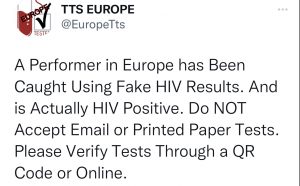A local organization that granted money to fight HIV/AIDS in Ventura County for almost 17 years soon will be no more.
The Ventura County AIDS Partnership announced this week that it will not be issuing requests for 2013 grant proposals in the fall and will be disbanded by the end of this year.
“It was a tough decision,” Executive Director Madhu Bajaj said. “Our advisory council really thought about it. We looked at community need, we looked at the existing programs available, we looked at whether it was possible for us to evolve.”
In the end, the board decided the AIDS Partnership was created as a grant-maker — a structure not working as well as it once did because of shrinking funding.
“It’s a very sad situation,” said partnership advisory council board member Doug Halter, who has been living with HIV for 25 years. “The AIDS epidemic is still not over. We were hoping the day we wound down was the day they came up with a cure.”
Statistics from the Ventura County Public Health Department show fewer reported AIDS cases in 2011 when compared with 2010, but four times as many deaths. There were 30 cases of AIDS and 14 deaths in Ventura County reported in 2011, compared with 37 cases and three deaths in 2010.
Currently, 356 people in Ventura County are known to be living with HIV, the virus that causes AIDS. There have been 1,185 cases of AIDS reported to the Public Health Department since reporting became mandatory in 2002. Of those, 613 have died and 572 are still living.
The AIDS Partnership has been hurt by a dwindling of matching funds from a national program called AIDS United. When the partnership formed in 1995 with the help of the United Way of Ventura County and the Ventura County Community Foundation, it was linked with the National AIDS Fund, which later became AIDS United.
Donations raised locally were matched by AIDS United. Under this arrangement, the partnership has been able to grant more than $1.4 million to Ventura County HIV prevention programs and AIDS care services.
The federal budget crisis began whittling away funds for AIDS United, and its leaders decided to focus their remaining money on 12 U.S. areas with a high incidence of HIV/AIDS.
Without matching funds from AIDS United, it became harder and harder to raise money locally, Bajaj said.
“This year, we granted $39,000,” Bajaj said. “Last year, $60,000. … I think we all saw this coming.”
Bajaj said advisory council members realized it was more effective to have interested parties donate money directly to the programs the partnership was funding.
Bajaj thanked all the businesses and organizations that consistently donated money but said that in the end, the loyal base of supporters was not enough for the partnership to continue.
As the organization winds down, it will continue to manage funds already granted. Its Camarillo office is set to close at the end of June, and all business then will be conducted through its website at www.vcaidspartnership.org. The organization is set to shut down completely on Nov. 30, officials said.
Over the years, the partnership funded some programs run by the Ventura County Public Health Department HIV/AIDS program. The administrator for the program, Craig Webb, said it provides HIV testing, medical assistance, client advocacy, transportation and case management, among other services.
Webb said while the partnership is ending, the Public Health Department is continuing to get new cases of HIV and AIDS.
“I think what we need to do is not lose focus on HIV and AIDS,” Webb said. “We need to continue to provide education and prevention.”
No one believes that more strongly than Halter.
“I didn’t think I would see 30, not to mention 51,” Halter said of his age. “As we were taking the vote on the advisory board, it took a lot for me to hold back my emotions. This has changed the way I perceive the world.”
Money for HIV/AIDS has been reduced, but there also are cultural reasons that interest has waned, Halter said.
“A lot of people were not here during the dark years when everybody was dying,” Halter said. “I remember we didn’t go to parties. We went to funerals.”
AIDS once was perceived as a disease of young gay men, Halter said. Now, the face of AIDS has broadened to include women, children and heterosexual men.
“It’s been quite a journey with a lot of stigma, a lot of taboos, a lack of education on how to prevent people from getting HIV/AIDS,” he said.
People with AIDS are living longer due to better medications, so it’s possible the disease is no longer seen as a crisis, Halter surmised.
Bajaj and Halter said HIV/AIDS awareness has to remain a priority to avoid a repeat of the 1990s crisis, so he and other advisory council members are considering ways to fill the void created by the partnership’s departure.
“We’re going to have to become something different,” Halter said. “The epidemic is still there.”







356 people in Ventura County have HIV. The population of the county, according to the 2010 census, was 823,318.
The HIV/AIDS “epidemic” in Ventura County is 0.04% of the population. Four hundredths of one percent of the population.